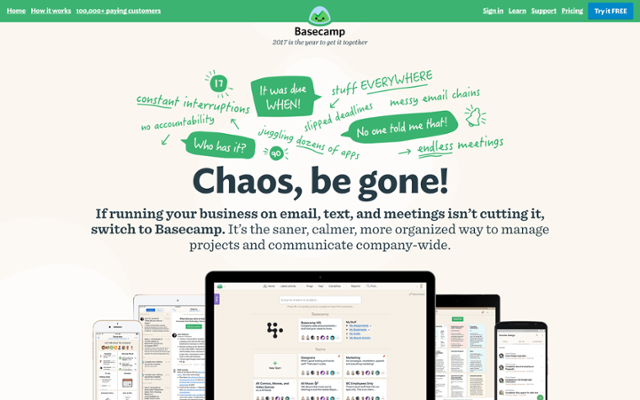The ancient Greeks passed stories down from generation to generation. Even before writing and reading became popular, the oral tradition of storytelling ensured that epics like the Odyssey were widely shared and would endure for many more generations to come. Today, we still enjoy stories like Hercules, Pandora’s box, Oedipus, and much, much more.
Storytelling has become something of a buzzword, but it’s an undeniable part of how humans have always connected to one another. Storytelling skills can help people in many disciplines, from sales to HR, but they’re especially useful for product teams who have just a few moments to woo users.
Using techniques from powerful stories can provide that extra boost of engagement and build an emotional connection with users.
Here are a few storytelling techniques to try in your product.
1. Set the tone of the product in the first moments
“It was the best of times, it was the worst of times…”
Charles Dickens’s opening to A Tale of Two Cities is probably one of the most famous first lines in literature. Not only is it poetic, but the contrast sets up some expectations for the reader, without giving away too much of the love story in war-torn France.
The first moments in your product experience are even more important. They don’t just set the tone for your product’s value, but they also determine whether or not users stay. Vivek Bedi, Head of Product at LearnVest and founder of mySwapp, describes a common first user experience:
Ever go to a website and based on the first ten seconds you decide to stay on it or not? Or ever download an app and can’t figure it out how to use it within the first minute and subsequently delete it? Well that’s reality. Humans are impatient people. We are selfish by nature and our time and attention is valuable. If you don’t have something to say that we care about you will lose us instantly. It’s important when crafting your story to focus heavily on the first few minutes.
One way to capture attention and set the right tone for your product is to welcome users. A friendly welcome page is a nice way to thank users for trying your product and remind them that they’ve made the right decision.
The meditation app Insight Timer has a great, straight-forward message for new users.

The welcome screen greets new users by their name and gives a brief overview of the app’s benefits. There’s even a few forms of social proof to help validate the product’s value.
2. Have a hero that everyone can root for
Atticus Finch. Jane Eyre. Holden Caulfield. Some of the most enduring stories rest on having a hero character that we all want to win, no matter how insurmountable the odds. We become engaged in their story because we want to see our heroes achieve their missions.
Mascots are kind of like your product’s hero. They are often consistent characters in the user journey, appearing in marketing pages all the way through to the in-product experience. Like heroes to a story, they exemplify the main themes of your product.
Mascots, even when they're animal characters, can build a more human connection with customers, says Janet Choi, Senior Manager of Product Marketing and Content at Customer.io. She describes what Ami, their delightfully adorable mascot, does for the customer experience:
It’s that small but meaningful emotional connection to a character that feels human and expressive. Ami catches the eye, conveys a friendly personality, and ever since she came to life, we've found that people are naturally drawn to her.
Ami’s whimsy and cuteness give our users tiny boosts of emotional support and delight as they navigate around our platform, where they can get in the weeds of features.
Having a mascot like Ami is a visual representation of how we want to come across, communicating who we are as a company with our audience, users, and customers.
The best mascots are more than just a pretty sight. As eye-catching as Ami is, what is most impressive is her journey towards representing the powerful email platform. Customer.io’s designer sketched up several different characters, including a robot and bear, before landing on a carrier pigeon. The team had to go through several iterations to make sure that they completely nailed the mascot.
And hard work paid off.

When the team finally did choose Ami, they made sure she had more depth than just being cute. Ami is named after Cher Ami, a real-life pigeon that saved a battalion of soldiers during World War I by delivering a message despite being wounded.
“Of course those are totally different circumstance, but there are strong connections to our mission to help businesses and organizations be able to reach the right people at the right time,” said Janet.
3. Use suspense to keep users coming back
Stories often use cliffhangers to keep people engaged. J.K. Rowling kept millions of readers waiting for the next Harry Potter book by planting bits of anticipation at the end of her stories. The result? A billion-dollar franchise.
While keeping people waiting in your product with cliffhangers sounds like a bad onboarding idea, variable rewards can inspire a similar feeling of uncertainty and excitement. Best described by Nir Eyal in Hooked, his best-selling book on customer experience, variable rewards are distributed on a seemingly random schedule. Our desire for predictability makes us crave these things (think video games and slot machines) all the more.
Some products have variability built into them. Tinder in effect creates many tiny cliffhangers (will the other person swipe left? will they message me? what they look like? will they be the one?). Users experience variable rewards with every product interaction, driving engagement all the more.
4. Craft an actual story in your product
What better way to use storytelling techniques in your product than by creating an actual story?
A new trend in selling SaaS—the self-service product demo—lets product owners and sales teams engage trialers by pre-populating a trial account with sandbox data. This tactic works well for products that require installation, input from other teammates, or time to populate with meaningful data.
Amplitude’s product demo lets users slice and dice user behaviors for a hypothetical music app.

At any point during the trial, users can install Amplitude to start using the product with their real data or contact sales to learn more.
If a product demo doesn’t make sense for your customer experience, you can also craft a story by embedding a mission into onboarding. Ptengine’s user onboarding flow does a similar thing as a self-service product demo on a smaller scale. It sends users on a mission as a fictional clothing store owner, Emily.

5. Build conflict and resolution
Most good stories contain conflict that the protagonist has to resolve. Whether it’s an external force, like Ahab’s Moby Dick, or an ongoing internal dialogue, as in Crime and Punishment, conflict builds suspense and often serves as a pedometer for the story.
Conflict translates naturally to storytelling in products. People use your product to solve a specific problem or to get a specific job done. Applying conflict makes the most sense while marketing the product. Take a look at Basecamp’s home page.

Basecamp has marketed its project management software with an eye towards the jobs-to-be-done framework. But once users are inside the product, they receive helpful tips on how to use the software.

In most cases, it doesn’t really make sense to harp on conflict once users have identified with the problem and are already exploring your product as a solution.
6. Use time to evoke emotion
Endless stories have been built around the element of time and how we perceive it. Writers like Proust and Borges have played with our faulty sense of memory to craft fantastic, creative storylines.
From Timehop to #tbt, it seems like more and more products are appealing to our sense of nostalgia. There is psychology to back this up. Research suggests that thinking about the past makes us fosters a sense of social connectedness. For social products, evoking a sense of nostalgia may make us want to reach out to others more, ideally by engaging more and more with the product (interestingly, feeling more socially connected also weakens our hold on money, which may explain the resurgence of throwback beer cans and vintage cereal boxes).
The folks at Google are experts at perfecting the user experience and integrating services across multiple platforms. Consider Google Photo. Compared Google’s other products, users probably don’t check Google Photo that often. To drive engagement towards Photo, Google uses an in-app widget that appears across their other products.

When users click on the “rediscover this day” alert, they’re not simply taken to an album with photos from the day in question. Instead, Google uses the opportunity to build suspense by blurring out the picture and compelling users to “think back.”

Another way to play with time in your product is to paint an inspiring future for the user. Fitness products and money management software are especially poised to do so.
7. Signal the importance of something
Writers often signal the importance of something through themes. In your product, you’d have to use more obvious tactics to indicate when something is worth doing.
One straight-forward way to signal importance is through social proof. While social proof is often used in customer stories and other marketing assets, social proof can help move users along key actions as well. PayPal uses social proof in “see for yourself why millions of people love PayPal” to ease the anxiety of trying a new product.

Once users are engaged with your product, they may need nudges to indicate what’s important. This can happen because there’s a new feature that they should know about, or they’ve forgotten about an old feature.
Unobtrusive UI patterns like slideouts can help indicate where a user can explore more. See how Indiegogo uses slideouts to announce a new integration with Apple Pay.

Make your product a best-seller
Rudyard Kipling once wrote, “If history were taught in the form of stories, it would never be forgotten.”
While storytelling techniques might not make your product last forever, they can change attitudes and behaviors. This isn’t a guarantee of engagement, but it’s a great start to building a fruitful customer relationship.
Harnessing the power of storytelling in your product, even in small and subtle ways, can help build a convincing use case for your product. By evoking emotion and spurring curiosity, stories can help your product become more than just another tool.
user onboarding academy










